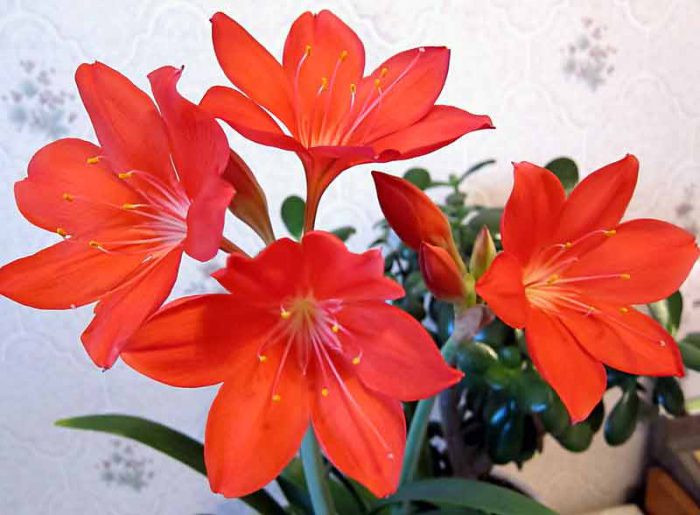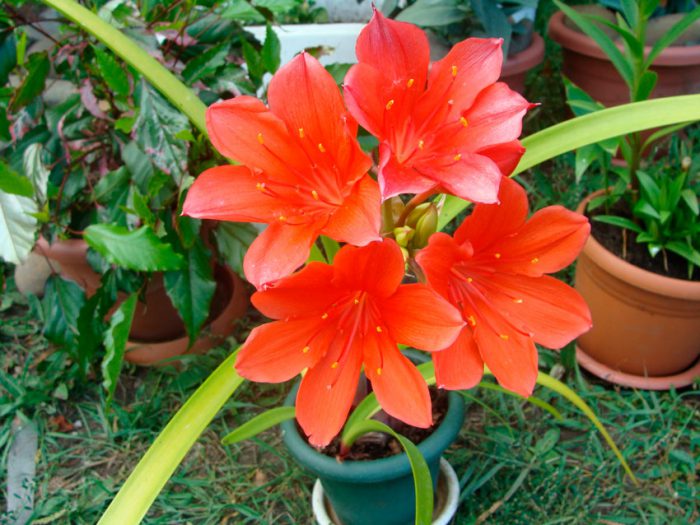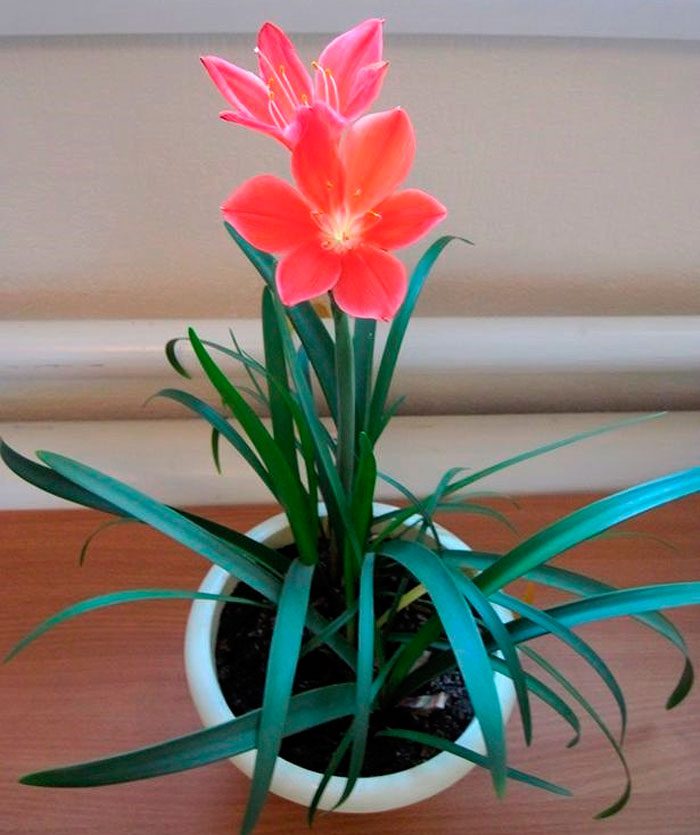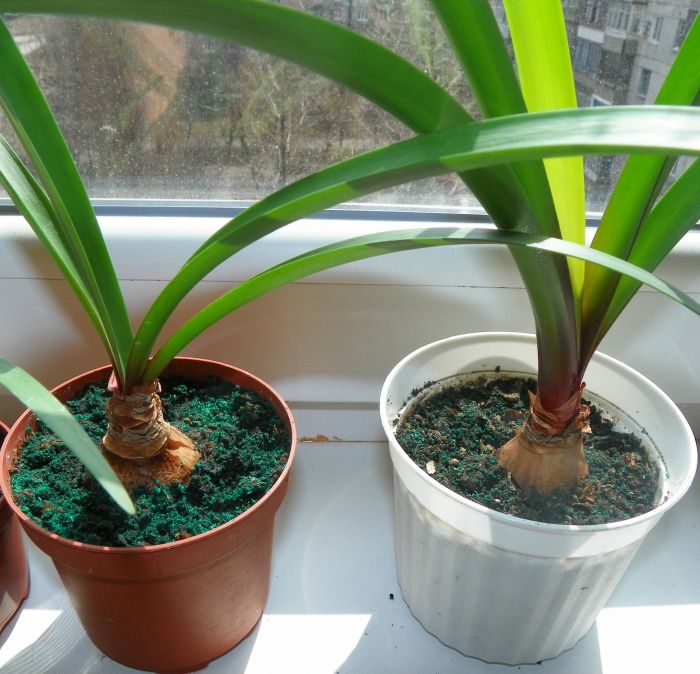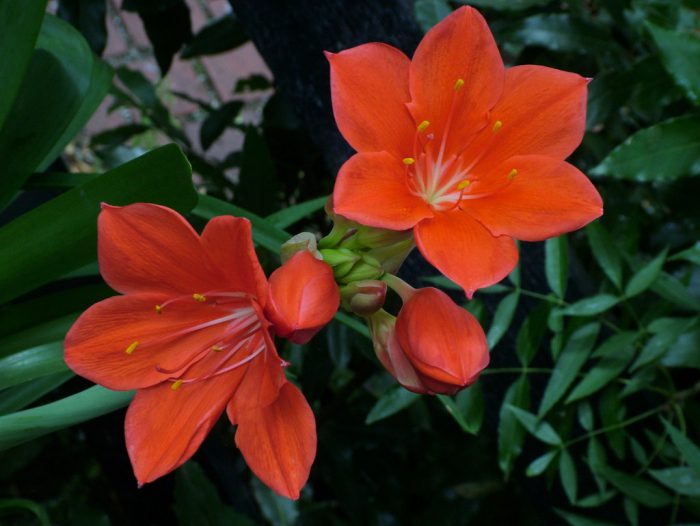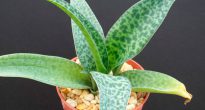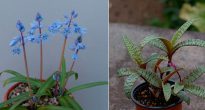A plant like vallot (Vallota) is directly related to the Amaryllidaceae family. It comes from the humid subtropical regions of South America. This plant is named after the Frenchman Pierre Valleau, who was a botanist.
This bulbous plant is a perennial. On the surface of the small oval bulb is a layer of dry brownish scales. The dark green leaves at the base are purple in color. They have a xiphoid shape and reach a length of 50 to 60 centimeters. The leafless peduncle bears an umbrella-shaped inflorescence, which consists of 3-9 flowers. Such a plant can be easily distinguished from other representatives of the amaryllis due to some characteristics. Only in this plant are the bases of the leaves of a rich purple hue, and the inner scales of the bulbs at the same time have a light crimson color. The formation of children is very unusual in the Vallotta. So, in some plants, children break through the covers of the bulb at the very base. And in this plant, special legs appear directly in the bulb, pushing the children upward. Often such babies can be seen on the surface of the soil, but nothing threatens them. The fact is that they have special roots that gradually draw the children into the depths of the soil, which allows such plants to capture new territories.
Caring for a wallot at home
Illumination
Loves light very much. Recommended to be placed on a windowsill. An east-facing window is great.
Temperature regime
In the warm season, a temperature of 20 to 25 degrees is required, and in the winter - from 10 to 12 degrees.
Humidity
In the summer, when the temperature rises above 25 degrees, the foliage is systematically moistened from the sprayer. At the same time, do not allow water to enter the surface of the flowers. You also need to systematically wipe the leaves with a damp cotton napkin.
How to water
Water sparingly during intensive growth. This is done after the top layer of the substrate dries out. In winter, watering frequency is related to the room temperature. So, at this time, the plant is provided with either poor watering, or it is completely stopped being watered. Do not allow the leaves to die off, because this has an extremely negative effect on the condition of the plant.
Top dressing
Top dressing is carried out during the period of active growth once every 2 weeks. For this, fertilizer is used for flowering indoor plants.
Flowering features
If the bulb is well developed, then it will bloom twice a year. The flower lasts about 5 days. In this case, 2 or 3 flowers open simultaneously.
Earth mix
The soil must be saturated with nutrients. To prepare the soil mixture, combine the sod and deciduous soil with humus (1: 4: 2), while sand is added to the mixture.
Transplant features
The plant reacts negatively to damage to the bulbs and root system, as this can cause it to rot. In this regard, the transplant is rarely carried out, about 1 time in 2 or 3 years in the spring and only with a strong proliferation of bulbs. During transplantation, the children are separated from the bulb, since they deplete the mother plant. It is recommended not to deepen the neck of the bulb during planting, so you can quickly separate the children.
Reproduction methods
You can propagate by seeds and children.
During transplantation, the separated children are seated in separate containers, the diameter of which does not exceed 9 centimeters. They should be buried in the soil only 2/3. Watering should be sparse at first. Flowering is observed already in the second year of life.
Sowing seeds in moist soil is done in October or November. The container is covered with glass or foil. The greenhouse must be ventilated every day and at the same time the substrate must be moistened from the sprayer. Maintain the air temperature from 16 to 18 degrees. Seedlings will appear after 3-4 weeks. If there is such a need, then they can be transplanted. The 1st pick is carried out after 6 months. Young bulbs are planted in the soil so that their necks are not visible. Water in moderation. In spring, in the 2nd year, the plants are planted in individual pots, while their neck should rise slightly above the surface of the substrate. Flowering is observed 3 years after sowing.
Pests and diseases
The greatest danger is root rot (fusarium), especially for young bulbs. Plant growth slows down, leaves die off, outer scales begin to rot. Often this disease infects the plant from the soil. Therefore, before planting a vallot, the soil must be calcined.
Gray rot is formed if the plant is watered abundantly during the dormant period.
Can settle spider mites, aphids and scabbards.
Video review
Main types
This genus unites 3 species, but according to the latest data Vallota speciosa and Vallota purpurea are transferred to the genus Cyrtanthus, and Vallota miniata to the genus Clivia.
Vallota speciosa
This plant is also called sublime cyrtanthus (Cyrtanthus elatus), purple amaryllis (Amaryllis purpurea Aiton), beautiful crinum (Crinum speciosum). On the surface of the oval-elongated bulb is a layer of brownish scales. Dark green, leathery leaves reach 40 centimeters in length and have a xiphoid shape. The length of the leafless hollow inside the peduncle is about 30 centimeters, and it grows from the center of the bulb. Umbrella-shaped inflorescence bears 3-6 flowers. The corolla consists of 6 petals, the length of the flower can reach 8 centimeters, and in diameter - from 8 to 10 centimeters. They can be painted in various shades from dark red to orange. But the “Alba” variety has white flowers.
Vallota purpurea (Vallota purpurea)
This bulbous plant is a perennial. Its leathery, short, narrow leaves reach 25-30 centimeters in length. They are painted bright green. The inflorescences bear 2-8 small flowers, which are 5 to 6 centimeters in diameter. Bell-shaped flowers are red in color and slightly pointed petals.

